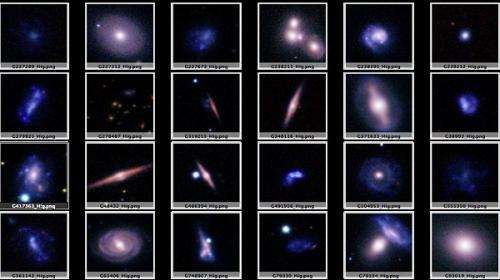Scientists drilling the universe to uncover its history

WA scientists are using telescopes to drill holes in the universe to unlock how galaxies have evolved.
Much like geologists drill the ice of Antarctica to find out about the climate or species of animals living thousands of years ago, astronomers from the Galaxy and Mass Assembly (GAMA) project are using telescopes to build a picture of galaxies two-and-a-half billion years ago.
Principal investigator and ICRAR's Simon Driver says the GAMA project, established in 2007, uses five ground-based telescopes around the world including the Anglo-Australian Telescope in NSW all aimed at 300,000 galaxies in a section of the southern sky.
He says the project is a break away from traditional astronomy research in which scientists would work in small groups to examine specific questions.
"Ours is the only survey project that goes across lots of telescopes," Prof Driver says.
"It is the only survey that covers the whole electromagnetic spectrum.
"That is important because galaxies are very complicated, they have lots of things inside them like stars and dust and black holes.
"All of these things give out radiation at different wave lengths.
"So if you only look at one wave length you only see one part of the story."
He says the average distance of our galaxies have a redshift of about .25 and it takes about 2.5 billion years for the light to get from those galaxies to us.
"So in effect we are seeing those galaxies as they were two-and-a-half billion years ago," he says.
"Because we have galaxies right from the front of our nose right out to redshift .25 we can start to look at galaxies that are half-a-billion light years away, [and] galaxies that are one billion light years away and can start to look at and compare and look for differences.
"Ones that are further away are a little bit smaller and are forming stars more vigorously, so they are a little bit bluer and they have slightly fewer metals."
He says ultimately researchers want to extend the project out to 13 billion light years.
Importantly the project is building a database of information on the galaxies which Prof Driver says could open up many doors to scientists because they could make a serendipitous discovery and find a new type of galaxy or find out the physics we use today cannot explain a galaxy.
Provided by Science Network WA




















